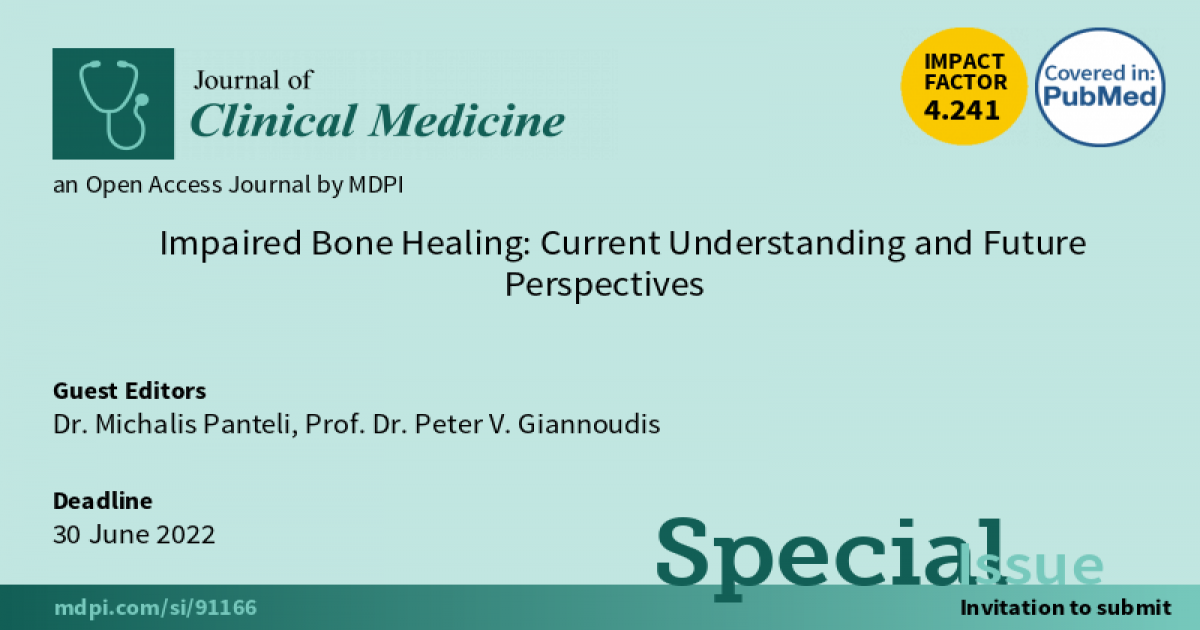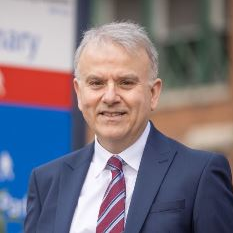Impaired Bone Healing: Current Understanding and Future Perspectives
A special issue of Journal of Clinical Medicine (ISSN 2077-0383). This special issue belongs to the section "Orthopedics".
Deadline for manuscript submissions: closed (30 June 2022) | Viewed by 8513

Special Issue Editors
Interests: non-union; fracture; bone healing; basic sciences; arthroplasty; hip replacement; knee replacement
Interests: pelvic instability; pelvic reconstruction; non-union; bone regeneration; post fracture fixation complications
Special Issues, Collections and Topics in MDPI journals
Special Issue Information
Dear Colleagues,
Bone healing is a complex but well-orchestrated physiological process which recapitulates aspects of the embryonic skeletal development in combination with the normal response to acute tissue injury. It encompasses multiple biological phenomena and is margined by the combination of osteoconduction (extracellular matrix formation); osteoinduction (timed cellular recruitment, proliferation and differentiation of mesenchymal stem cells (MSCs) into osteoblasts and chondroblasts, controlled by multiple signaling molecules); and osteogenesis (new bone formation). In contrast to scar formation, which occurs in the majority of other tissue types in adults, bone has the innate capability to repair and regenerate, regaining its former biomechanical and biochemical properties.
Despite advances in the understanding of the pathophysiological mechanisms of fracture healing, the incidence of non-union remains largely unchanged over the years and has been estimated at between 5% and 10%, representing a major social and financial burden in every healthcare system. It is generally accepted that the progression to a non-union in most cases represents a multifactorial process. Various risk factors have been implicated in compromised fracture healing, generally divided into two main categories: patient-dependent and patient-independent factors. In the majority of cases no obvious cause can be found, while an important factor that is often underestimated is the body’s ability to heal a fracture. This may involve insufficiency/dysfunction of the cellular components (osteoprogenitor cells), molecular elements (osteoinductive molecules and other mediators), angiogenesis, extracellular matrix, and local immunoregulation.
A large number of different strategies have been proposed in the literature for managing non-unions. These commonly aim to enhance the local and/or systemic biological environments, along with optimization of the mechanical stability and local vascularity.
In this Special Issue we invite studies focusing on the etiology and management of non-unions, both in the clinical and laboratory context. We particularly invite manuscripts identifying specific risk factors contributing to the development of non-unions and treatment strategies for their prevention/treatment.
Dr. Michalis Panteli
Prof. Dr. Peter V. Giannoudis
Guest Editors
Manuscript Submission Information
Manuscripts should be submitted online at www.mdpi.com by registering and logging in to this website. Once you are registered, click here to go to the submission form. Manuscripts can be submitted until the deadline. All submissions that pass pre-check are peer-reviewed. Accepted papers will be published continuously in the journal (as soon as accepted) and will be listed together on the special issue website. Research articles, review articles as well as short communications are invited. For planned papers, a title and short abstract (about 100 words) can be sent to the Editorial Office for announcement on this website.
Submitted manuscripts should not have been published previously, nor be under consideration for publication elsewhere (except conference proceedings papers). All manuscripts are thoroughly refereed through a single-blind peer-review process. A guide for authors and other relevant information for submission of manuscripts is available on the Instructions for Authors page. Journal of Clinical Medicine is an international peer-reviewed open access semimonthly journal published by MDPI.
Please visit the Instructions for Authors page before submitting a manuscript. The Article Processing Charge (APC) for publication in this open access journal is 2600 CHF (Swiss Francs). Submitted papers should be well formatted and use good English. Authors may use MDPI's English editing service prior to publication or during author revisions.
Keywords
- non-union
- fracture related infection
- avascular necrosis
- tissue engineering
- 3D bioprinting







